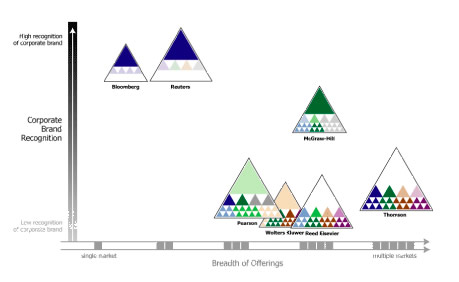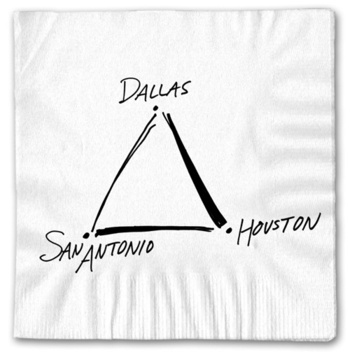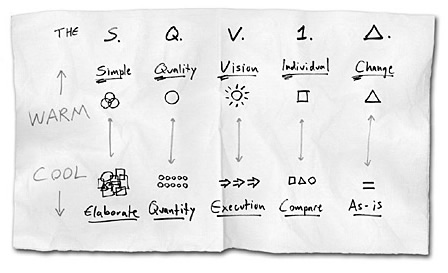Visual Selling
Book Review: The Back of The Napkin by Dan Roam
The Back of The Napkin: Solving Problems and Selling Ideas by Dan Roam is a meaty book for managers and marketers that explains how to turn problems and concepts into simple pictures to analyze and persuade. Roam’s premise is that people think visually, and by converting things like abstract concepts and masses of data into pictures, others will not only grasp that data more quickly but, in a problem-solving setting, find better ways to act on it.
Many of the books I review tend to be long on research and science, but short on practical implementation. The Back of the Napkin is the polar opposite. While there is a brief appendix devoted to the neuroscience of how the brain processes visual information, the philosophy and processes detailed in the book are based primarily on Roam’s experience as a consultant and facilitator.
The book’s title is a bit of a misnomer. While Roam starts with an example of how drawing a simple triangle connecting three cities helped launch Southwest Airlines, he presents several detailed and fairly lengthy procedures for stimulating creativity and problem solving. Some of the fully realized pictures are actually a bit complex and convey a lot of information. That’s not to say these more intricate illustrations aren’t effective – often, they allow distillation of reams of business intelligence data into a single, meaningful, easy-to-grasp chart. One example of this is the diagram below, which might require a dinner napkin, if not the whole tablecloth:

Although this chart may be less easy to grasp intuitively than, say, a few faces connected by arrows, Roam’s firm used it to combine vast amounts of brand and competitive data into one compact chart. Prior to the condensation, the data had been completely unmanageable; the graphic representation enabled management to understand the “big picture” far better than before. I’m sure that Roam would agree that all too often, managers try to explain the big picture using only words and numbers.
Don’t be put off by one intimidating graph – the vast majority of Roam’s examples are simple, hand-drawn, and easy to grasp in an instant. The best example is the real napkin-sketch that was the conception of Southwest Airlines:

Roam breaks the visual thinking process into four steps:
- Look – Collecting and Screening
- See – Selecting and Clumping
- Imagine – Seeing what isn’t there
- Showing – Making it all clear
This may seem a lot like other problem-solving or brainstorming techniques, as indeed many do follow a similar procedure for gathering and grouping information. By emphasizing the use of visual data at each step, though, Roam hopes to paint a clearer picture and to engage people in a different way.
A second multi-step process that forms the core of Roam’s visual representation method is what he calls SQVID:

I won’t get into the details of the process, but Roam details implementations of visual thinking that will work in a variety of brainstorming, problem solving, and selling situations. And while I think that any structured process that encourages a group to think aboutSQVI a topic in an organized manner is likely to work better than the far more typical group ramble, I do believe that Roam’s emphasis on visuals puts a unique neuromarketing spin on the process.
And even if Roam’s SQVID concept seems a bit too structured and jargonesque for your tastes, his simple and engaging illustrations are a constant reminder that you’ll connect better with your listeners with a picture or two than a dozen text bullet points.
